Bird banding brings us cool birds, interesting insights and always new questions, and this spring was no exception. We again shared these experiences with hundreds of visitors, from toddlers to school kids to adults of all ages. Without further ado, here are the birdy highlights from the spring.
Chatfield State Park, Colorado – Biologist Meredith McBurney said it was a slow spring for migration at Chatfield State Park southwest of Denver. A total of 508 individual birds were banded, about 13% below average for the station and 32% below last year. This decrease can be partly explained by the fact that the station was open fewer hours in the middle of the season, Meredith said, but the biggest impact was the drop in the number of birds caught during the last week. Daily numbers dwindled to the single digits when last year we were banding 20 birds or more. As a result, we caught far fewer of two of our most common Chatfield breeding birds: Yellow Warblers (lowest number since 2007) and Gray Catbirds (lowest since RMBO started banding at this location in 2006). Were the birds late? Did they arrive after we stopped banding? Or is there something else going on? We hope to answer these questions!
Meredith noted that we continued to welcome back birds that we had banded in prior seasons, including a Warbling Vireo, first caught in 2008, and two Yellow Warblers, a female banded as a second-year bird in 2007 (now 8 years old) and a male banded as a second-year bird in 2006 (now 9 years old). This male has been caught every spring except for 2008! Like last year, we had a late spring storm at Chatfield. In both 2013 and 2014, the storm brought down lots of Hermit Thrushes, so their numbers were again higher than usual, Meredith said. But the 2013 storm provided us with lots of Yellow-rumped and Orange-crowned Warblers, which were in much lower numbers this year. Despite lower numbers overall and fewer than usual total species, we caught four new species for the Chatfield station: Winter Wren, Blue-winged Warbler, Magnolia Warbler and Townsend’s Warbler. Very cool!
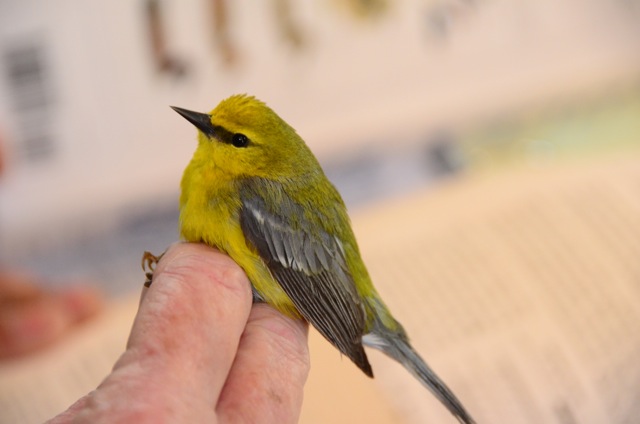
This was the first Blue-winged Warbler caught and banded at Chatfield State Park. Photo by Meredith McBurney.
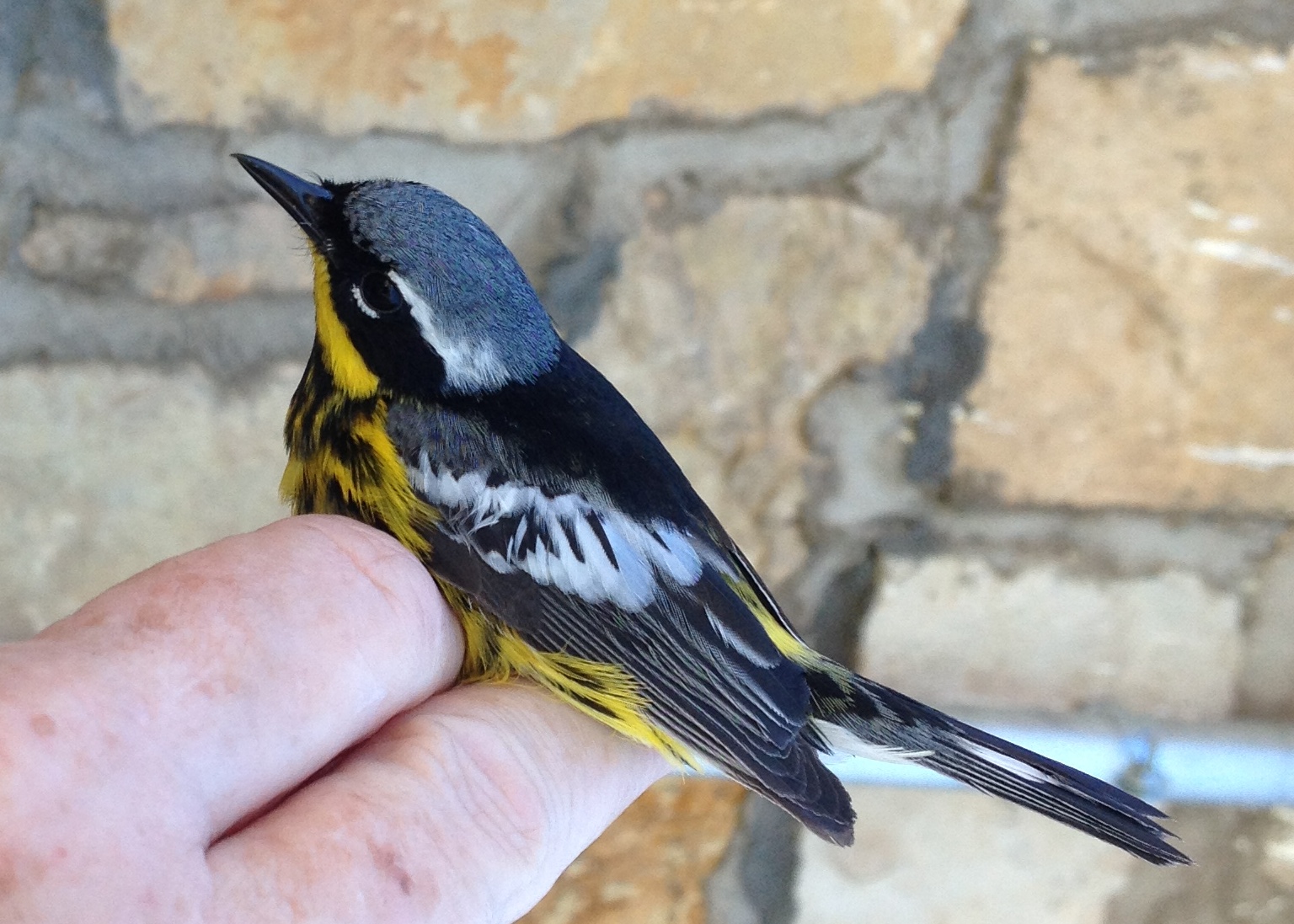
This was the first Magnolia Warbler caught and banded at Chatfield State Park. Photo by Jeff Thompson.

It’s good to see you again, Mr. Yellow Warbler! This male Yellow Warbler was first banded at Chatfield in 2006. It’s been caught every year at Chatfield since then except for 2008. Photo by Eivor Kuchta.
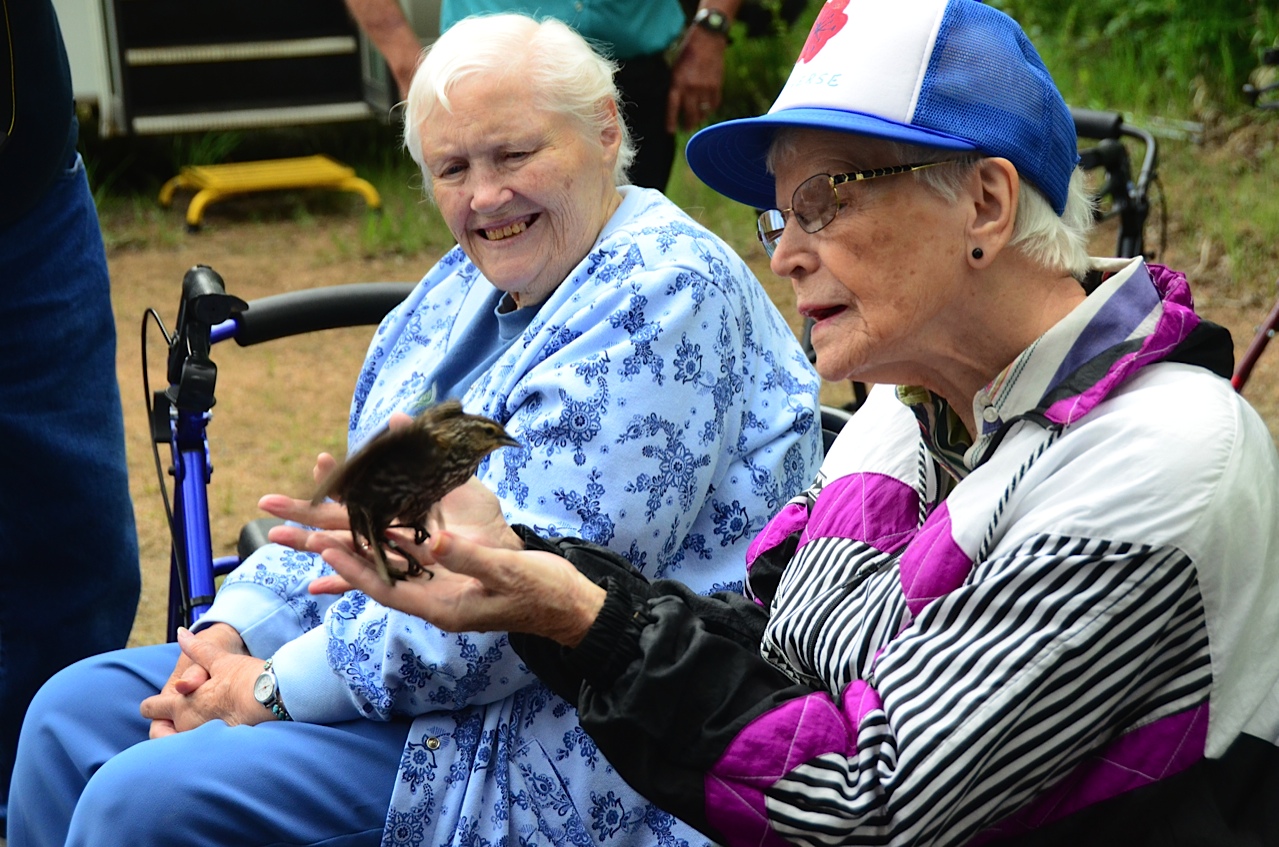
A resident of The Gardens at Columbine releases a bird. We really enjoyed having folks from the assisted living facility visit the station. Photo by Carolyn Jones.
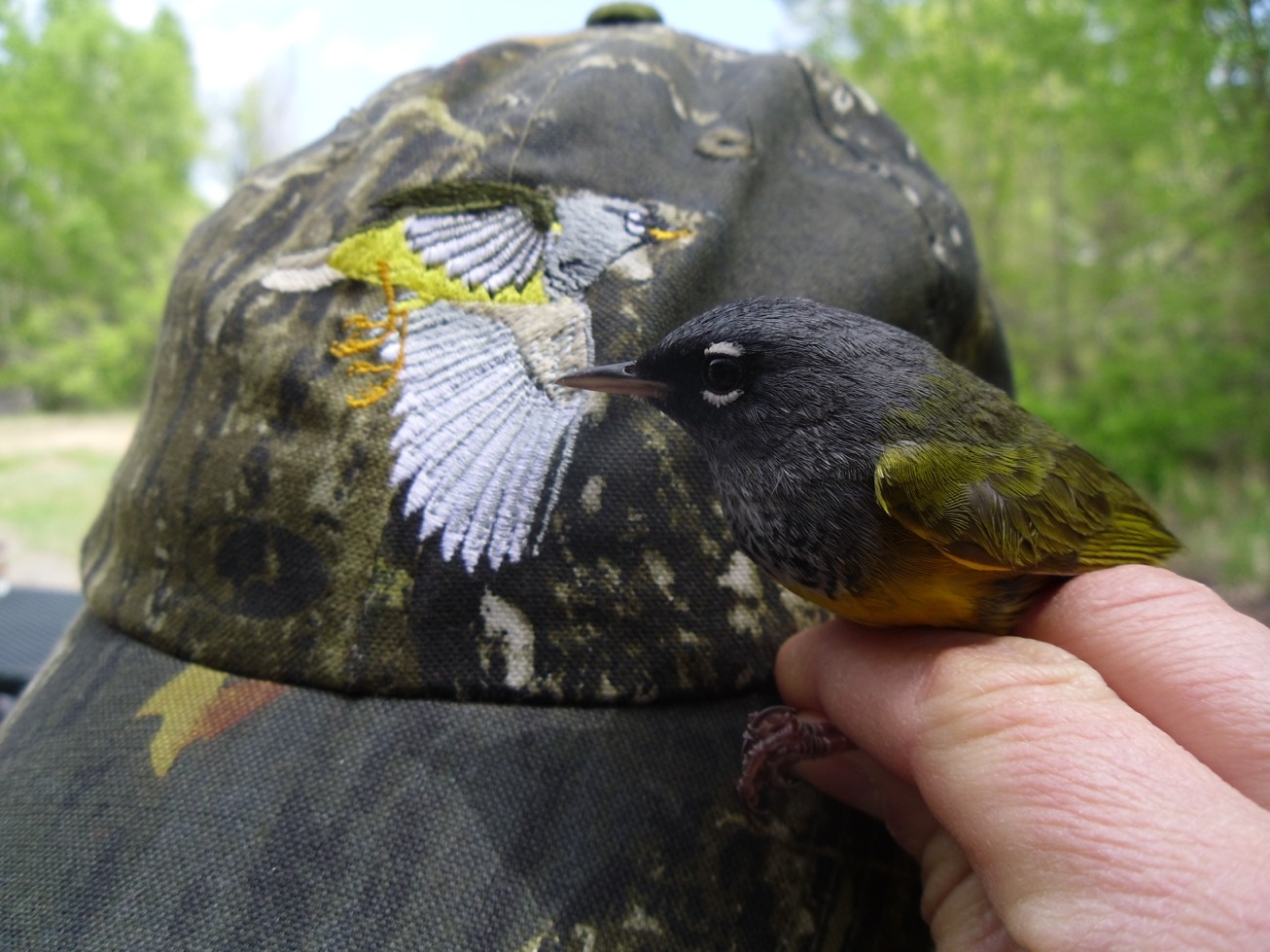
A pair of MacGillivray’s Warblers pose for the camera. Photo by Teddy Parker-Renga.
Chico Basin Ranch, Colorado – Biologist Nancy Gobris said it was another big spring for banding at Chico Basin Ranch, located 35 miles southeast of Colorado Springs. Nancy and volunteers caught and banded 1,004 individual birds of 69 species. This was the best spring since 2011, with 1,160 individual birds that year, and the fifth spring of 1,000-plus birds. Nancy said they caught a few rare species for this station, including an Eastern Towhee (only the second banded at Chico) and four Blackpoll Warblers. In addition, they caught and banded the station’s first two Flammulated Owls. This species had only been seen twice before on the ranch, once in 2004 and again in 2005.
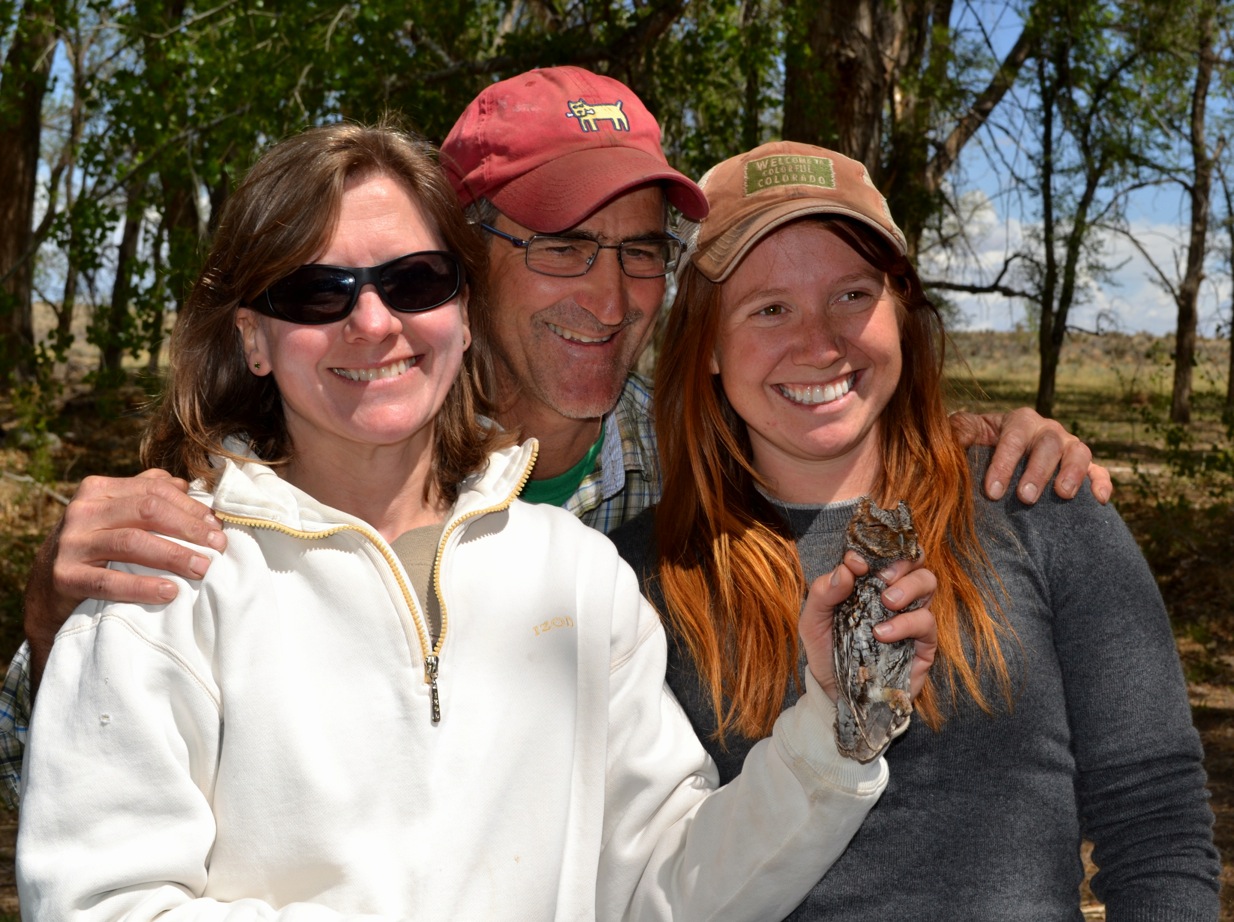
RMBO biologist Nancy Gobris and Chico Basin Ranch educators Lee Derr and Kathryn Baker pose with one of two Flammulated Owls caught and banded this spring on the ranch. This species was a first for the Chico station. Photo by Katie Miller.

This Blackpoll Warbler, a rare capture at Chico Basin Ranch, was one of four caught this spring. Photo by Nancy Gobris.

Female and male Western Tanagers caught this spring. Photo by Matt Rustand.
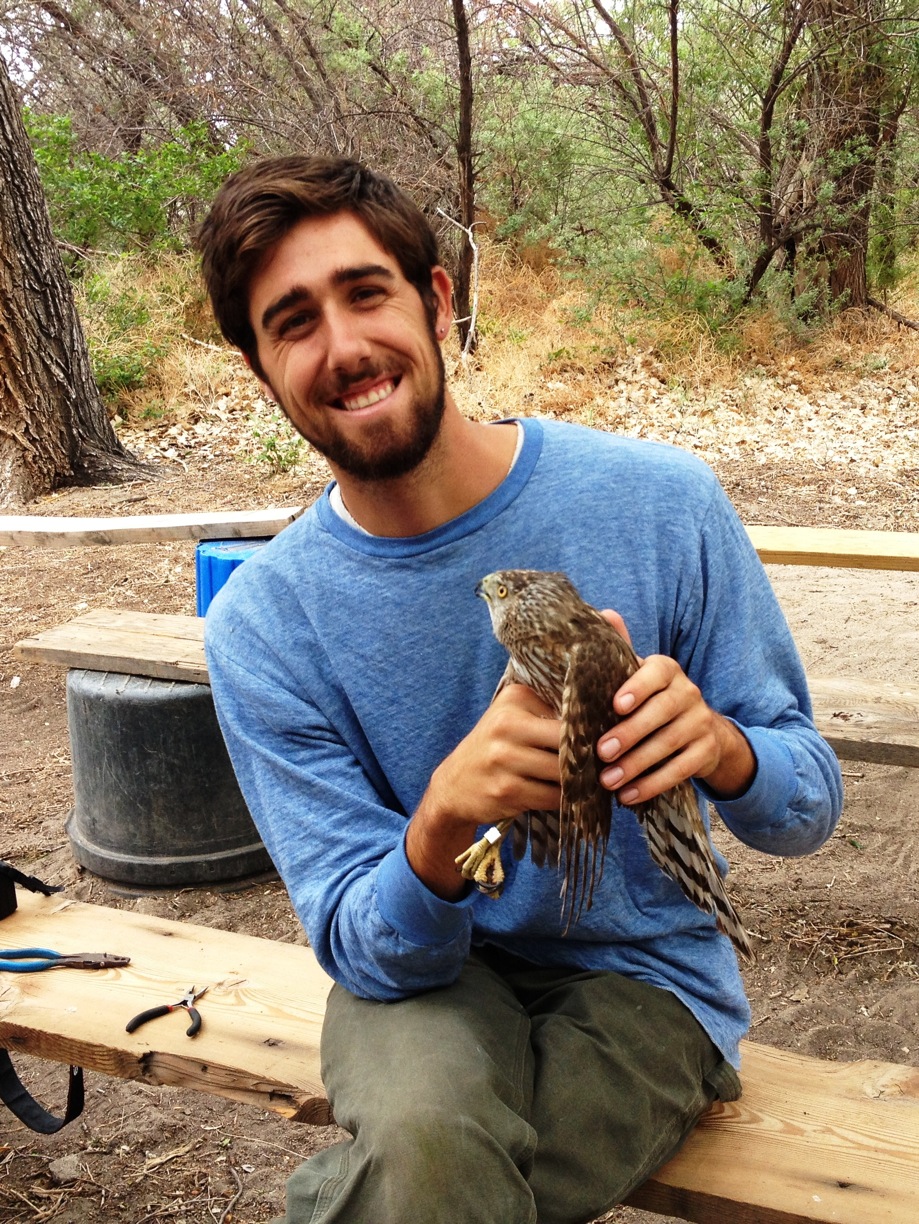
Volunteer and Colorado College student Lee Farese holds a Cooper’s Hawk he retrieved from the mist net himself. Photo by Nancy Gobris.
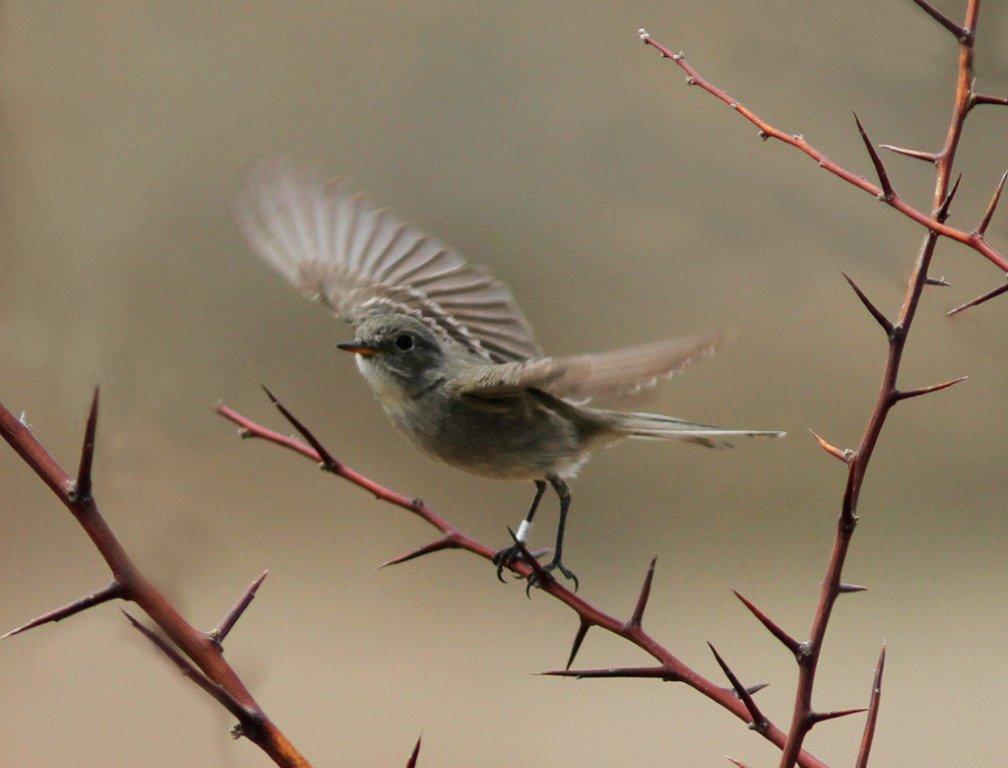
A Gray Flycatcher takes flight after getting banded at Chico. Photo by Bill Maynard.
Lee Martinez Park, Colorado – This was our first full spring banding birds at this city park in Fort Collins. Despite high winds and flooding closing the station for a few days, we managed to stay open until the end of May and capture 107 individual birds of 21 different species. Bird bander Anna Harris said cool catches for the season included Lincoln’s Sparrow, Black-headed Grosbeak, Hermit Thrush, Swainson’s Thrush and Northern Waterthrush.
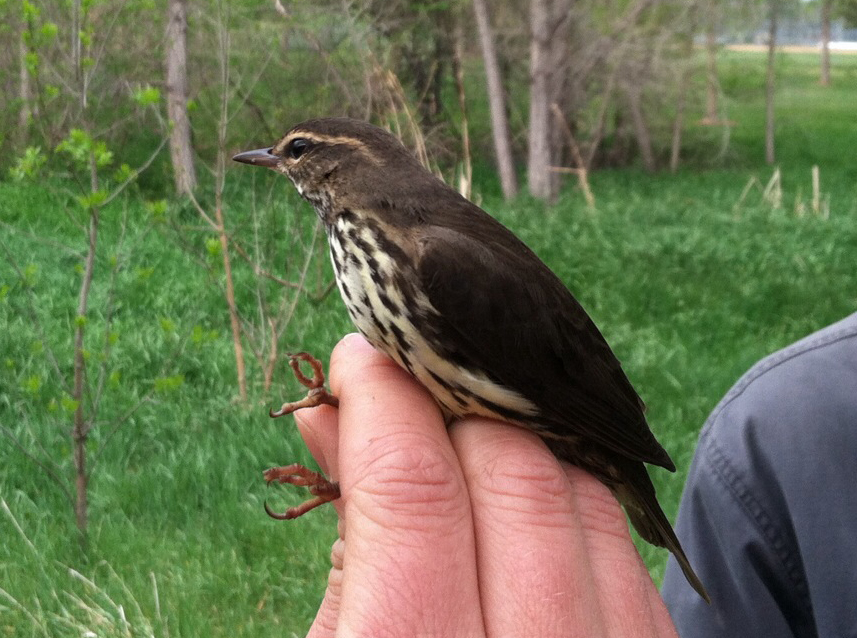
This Northern Waterthrush was first caught on May 7 weighing 18.8 grams and again on May 15 weighing 23.4 grams. We know this bird was using Lee Martinez Park as a migratory stopover site, resting and fueling up before migrating north to its breeding grounds. Photo by Anna Harris.
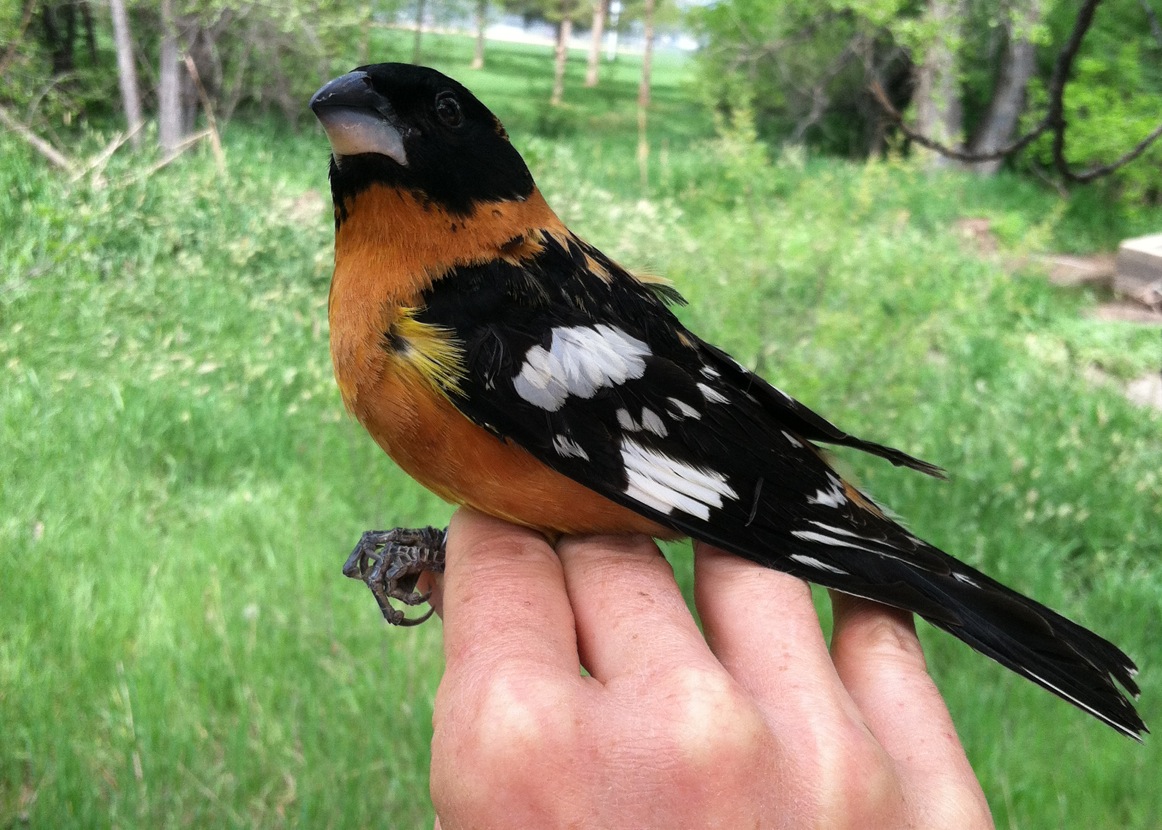
This Black-headed Grosbeak was a cool catch at the Fort Collins banding station. Photo by Anna Harris.
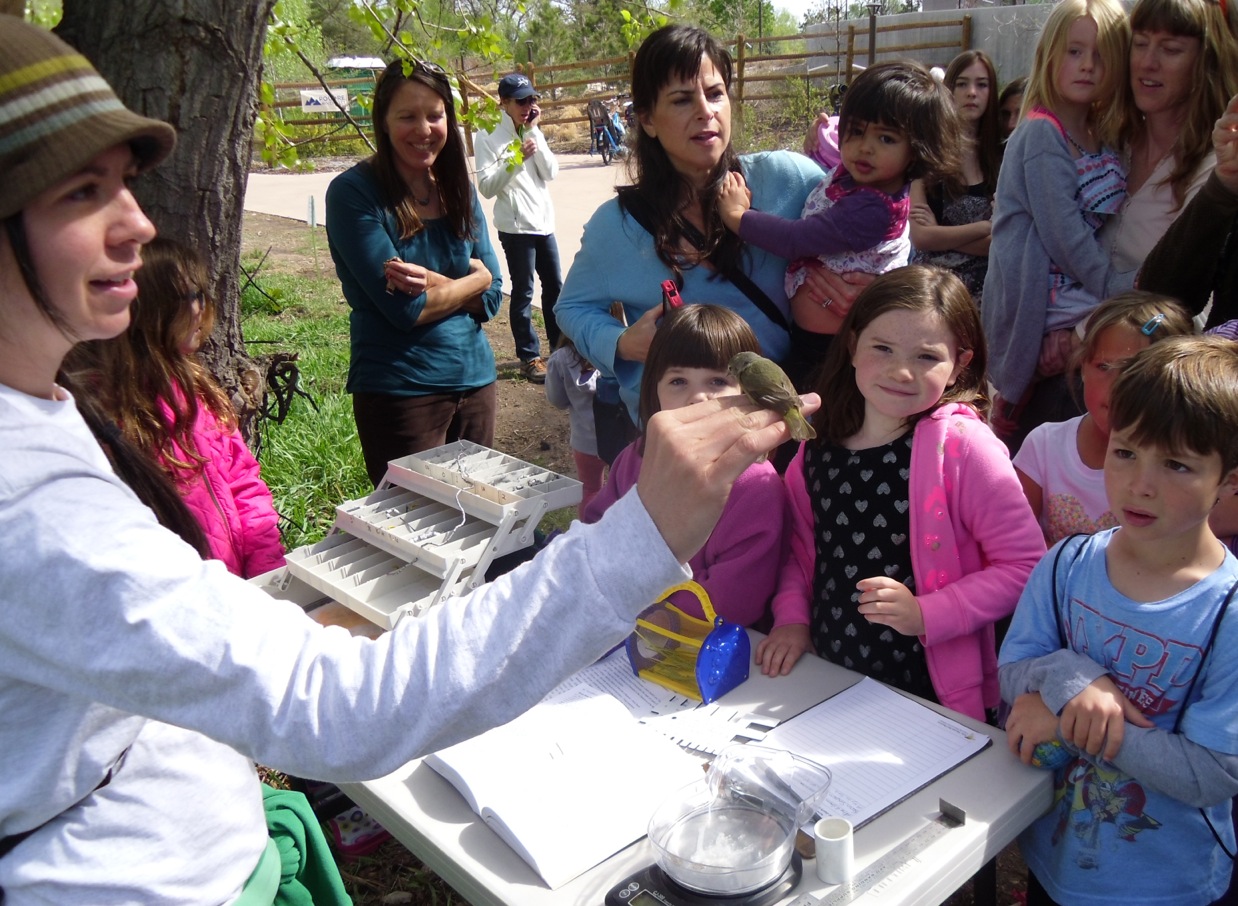
Bander Anna Harris shows an Orange-crowned Warbler to visitors during Poudre RiverFest this spring. Photo by Teddy Parker-Renga.
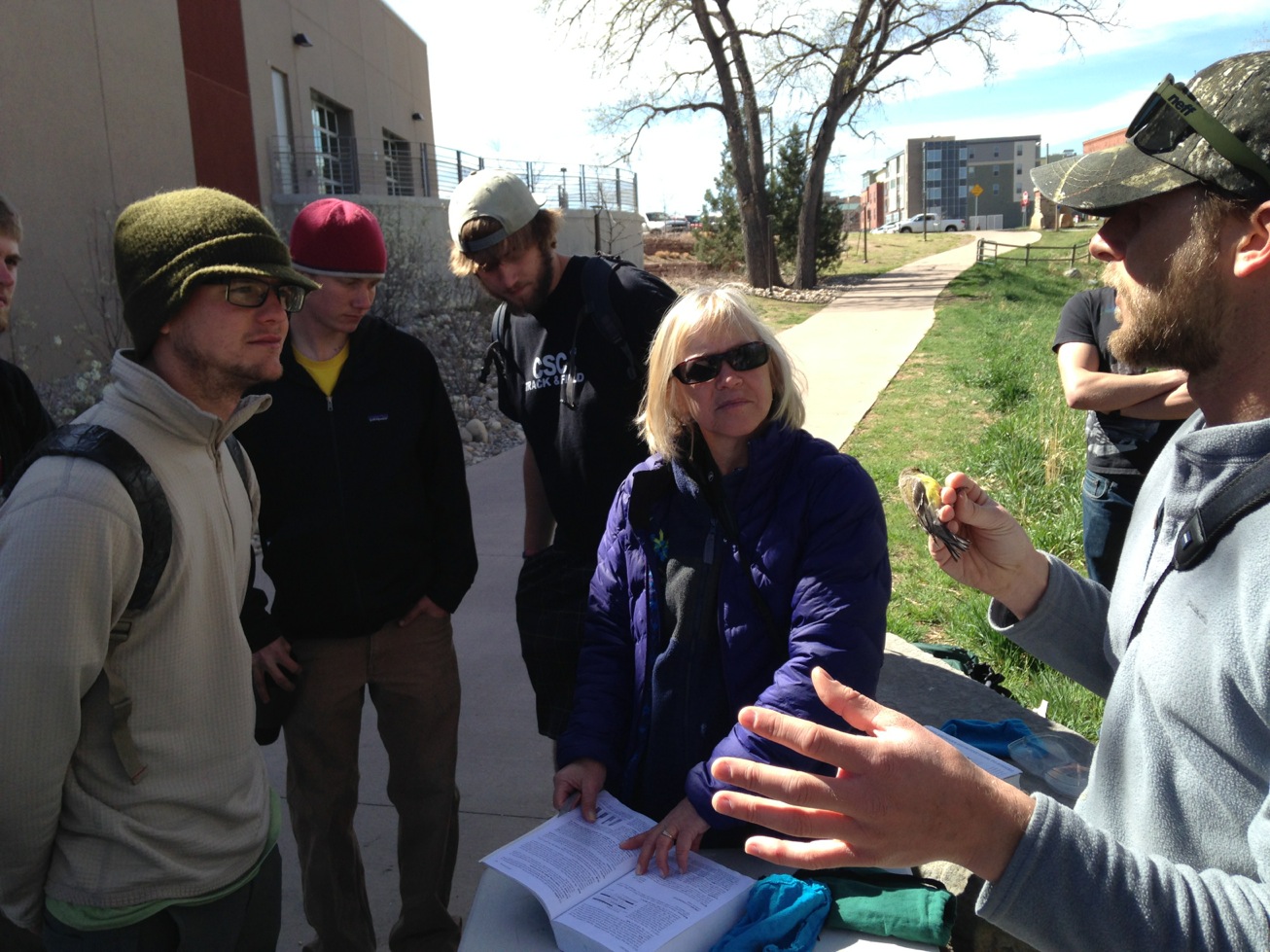
An ornithology class from Front Range Community College visits the Fort Collins banding station as part of its final exam. Photo by Teddy Parker-Renga.
We appreciate the many schools, families, community groups and others who visited our banding stations in the spring to learn about bird anatomy and migration. Thank you to the many partners and funders who helped us operate these stations. You help make it all possible!


